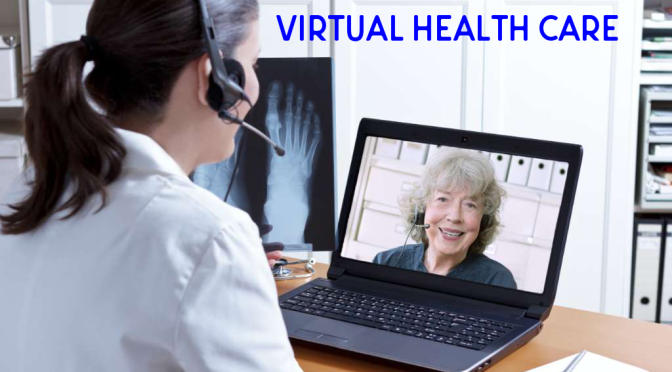“Virtual care has great potential for the routine treatment of chronic conditions, as well as minor acute illnesses like rashes and ear infections. Digital sensors already make it possible to monitor blood glucose, heart rhythm, blood pressure, temperature, and sleep.”
 From time immemorial, an invariable feature of doctor–patient interaction has been that it takes place in person. But the status quo is changing. A large portion of patient care might eventually be delivered via telemedicine by virtualists, physicians who treat patients they may never meet.
From time immemorial, an invariable feature of doctor–patient interaction has been that it takes place in person. But the status quo is changing. A large portion of patient care might eventually be delivered via telemedicine by virtualists, physicians who treat patients they may never meet.
The burden of disease has changed dramatically in the past century, shifting from acute infectious illnesses to chronic diseases. Clinic visits are poorly suited for the treatment of chronic diseases, yielding only single-point measurements of labile, continuous variables like blood pressure. Within the time constraints of an office visit, it can be difficult for the physician to make an accurate diagnosis, much less educate the patient about treatment and self-care. And after the patient leaves the doctor’s office, only limited monitoring of the condition is usually possible, without a return visit.




 On July 20, 1969, half a billion viewers around the world watched as the first images of American astronauts on the moon were beamed back to the earth. The result of decades of technical innovation, this thrilling moment in the history of images radically expanded the limits of human vision.
On July 20, 1969, half a billion viewers around the world watched as the first images of American astronauts on the moon were beamed back to the earth. The result of decades of technical innovation, this thrilling moment in the history of images radically expanded the limits of human vision.

 Fragility fractures occur in structurally weak bones due to aging and bone loss – osteoporosis. Dr. Anthony Ding explains what “fragility fractures” are, where they occur, what they mean to you, and how they are treated. Series: “Mini Medical School for the Public”.
Fragility fractures occur in structurally weak bones due to aging and bone loss – osteoporosis. Dr. Anthony Ding explains what “fragility fractures” are, where they occur, what they mean to you, and how they are treated. Series: “Mini Medical School for the Public”.